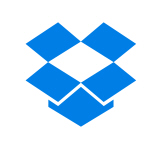
If you can measure IT you can make IT better
According to a study by New York-based risk management specialist Continuity Software, measurement and analysis is the key to achieving IT excellence.
Based on results from a number of sectors including healthcare, financial services, manufacturing and retail, the study underlines the importance of operational analytics in meeting performance targets.

Journal Communications: media takes off into the cloud
Journal Communications, Inc. (Journal) is a successful century-old media company based in Milwaukee, Wisconsin, USA. Our company owns and operates 34 radio stations and 15 television stations. We produce 20 print publications including the Milwaukee Journal Sentinel. For many years, our IT infrastructure for all of those media stations and papers functioned as separate entities. Our small team relied on long personnel-hours, hard work and dedication to keep everything running -- and functioning on time. As the company grew, however, we realized that this was not a sustainable model.
Originally, we had 17 implementations and multiple versions of Microsoft Exchange and SharePoint with multiple servers for each of our locations, most of which were not backed up or redundant. The company managed for years without significant problems, but we knew there was a better way. As a newspaper and media company, it’s important for us to maintain the highest levels of efficiency and accuracy in all of our IT and business processes. To accomplish this, we needed the most effective operational approach we could use -- for total reliability across a disparate infrastructure.

New Vimeo player is redesigned 'from the ground up'
Not all tech news is about Consumer Electronics Show 2014 this week. Today, Vimeo unveiled a new video player that puts preference on HTML5 streaming and provides content creators with fresh tools. Alongside the default codec choice, two benefits stand out: Improved performance, with videos loading claimed 50-percent faster, and support for in-app transactions.
The latter feature extends video-on-demand capabilities. "The addition of in-player transaction support allows creators even further control, by making any embedded Vimeo player a point of sale -- be it on a creator's own website or any page across the web", Kerry Taylor, Vimeo CEO, explains. "Since launching the Vimeo On Demand platform last year, we've continued to add new features that empower filmmakers to sell directly to their audiences on their own terms".

SOASTA reveals 5 technology predictions for 2014
It was a great 2013 for SOASTA. Out of the global $1.2 trillion dollars’ worth of business conducted online in 2013 across the globe, SOASTA, an established leader in website and app testing through the cloud, is trusted with protecting 10 percent of that figure -- or $150 billion. Based on the hundreds of brands SOASTA worked with and the challenges faced last year, here are five predictions that are pretty clear as we go into 2014. Hint: Simplify, the User Experience, and M-commerce will be buzz words for successful enterprises and e-commerce vendors.
My top five predictions for 2014 are as follows:

Dropbox makes Pause Sync more accessible, revamps setup wizard
Cloud backup and sync provider Dropbox has released a major new stable build for desktop with the launch of Dropbox 2.6.2 FINAL for Windows, Mac and Linux. Version 2.6’s headline new feature is brand new, redesigned installers for Windows and Mac platforms, but there are some useful functional improvements too.
The redesigned installer aims to make the process as simple as possible, automatically downloading and installing the new version with significantly less user interaction than previously.

My (achievable) tech resolutions for 2014 [Wayne]
As you’ll have noticed by now, the BetaNews writers have been making tech-based resolutions for the New Year. This is something I did last year, and revisiting my post for the first time since I originally wrote it, I discovered what I suspected would be the case -- I failed miserably across the board.
I said I would embrace Google+, but I haven’t. I’ve followed some people, and used Google’s social network slightly more, but embraced it? Nope. I said I’d change my passwords. I changed maybe two. I claimed I’d sort out my inbox. It was 79 percent full (8GB) then. It’s 74 percent full (11.19GB) now, so that’s a big fat fail. I said I’d learn to love Windows 8. I never did. I do really like Windows 8.1 though, so I'll claim that as a win. I stated I’d move my data to the cloud, and learn to program. I think you can guess how well those panned out. While a lot of my files are stored in the cloud, I still have multiple local copies of everything, and I haven’t programmed so much as a single line of code. So for this year’s list, I’m going to choose resolutions I believe I can actually achieve.

Why I’m not making tech resolutions for 2014 [Ian]
You'll have noticed by now that my colleagues here are all busy promising to clean up their tech acts for the coming year. But I'm not going to do that.
I don't generally make resolutions anyhow -- it saves having to come up with excuses later -- so instead here's what I won’t be changing in 2014.

The collapse of the internet and other things to look forward to in 2014
It's inevitable that at this time of year tech companies and analysts like to try to grab headlines with their predictions for the coming 12 months. Security specialist Kaspersky Lab is no exception, and guaranteed to make waves is its forecast of the collapse of the internet as we know it.
This, it says, will be driven by pressure to break the web up into national segments. So far this has only applied to counties like China with its Great Firewall, but other nations including Russia have planned legislation to prohibit the use of foreign services. In November, Germany announced that all communications between the German authorities would be fully locked within the country. Brazil too has announced its plans to build an alternative internet channel so as not to use the one that goes through Florida.

My favorite tech products of 2013 [Wayne]
Yesterday my colleague Mihaita Bamburic presented his list of the year’s top tech products, which included some obvious big choices, most notably Windows 8.1, iPad Air, Surface 2 and the Xbox One.
My list could easily be a carbon copy of his, after all the biggest tech products are hits for a reason, and despite not being a fan of Windows 8, I really like its successor, and would happily own both the iPad Air and Surface 2 if funds allowed. But I wanted to approach my selection slightly differently by avoiding products which featured on Mihaita’s list, and focusing on items I’ve bought (or been sent) and have used extensively. These are the tech products I’ve really appreciated the most this year.

IBM buys Aspera to speed up movement of big data
One of the problems with big data is its sheer size. This leads to problems when it comes to moving files around and can lead to a loss of competitiveness if companies aren't able to process files in a timely manner. The issue can be magnified if it involves transferring files to and from cloud platforms.
IBM has recognized this problem and in response has swallowed up California-based Aspera, a specialist in high speed transfer techniques. The company's patented "fasp" technology can reduce the transmission times for large files or data sets by up to 99.9 percent. It overcomes bottlenecks in broadband wide area networks that slow the transfer of extremely large files, such as high-definition video or scientific research data, over long distances.

Oracle buys Responsys to create the world’s biggest marketing cloud
Business systems specialist Oracle has announced that it’s reached an agreement to acquire Responsys for $1.5 million. Responsys is one of the leading providers of enterprise-scale, cloud-based business to consumer marketing software.
Buying Responsys extends Oracle's Customer Experience Cloud to create a product that meets the needs of companies with both B2B and B2C marketing requirements. It enables chief marketing officers (CMOs) to run marketing campaigns across email, mobile platforms, social media and the web, it also allows them to operate at a massive scale and across the full consumer lifecycle.

What have been the biggest disappointments of 2013?
It's that time of year once again. Approaching the end of another 365 and a quarter days cycle puts us all in a reflective mood. It's not uncommon to look back at what has happened in the previous 12 months and pick out the highlights of the year. It's also quite common to look forward in anticipation of what the coming year might have to offer. But how about something a little different, something a little more downbeat? What have been your lowlights and disappointments? There's no need to end the year on a high, after all!
I am one of those people still devastated at the loss of Google Reader. Both as a journalist and as someone who simply devours news from all manner of sources, this was my go-to service for getting my daily -- well, hourly… oh, OK, five minutely -- fix of headlines from hundreds of websites. Double disappointment came when I thought an ideal solution was to be found in Feedly, but slow updates and a pricing structure I found objectionable meant that this soon fell by the wayside. Disappointment number two. Still, it helped me to discover InoReader -- every cloud, and all that.

Style Jukebox takes your music collection to the cloud [Q&A]
Nowadays, cloud services like Pandora and Spotify allow us to listen to our favorite tunes no matter where we are, without having to actually own a single song. But what happens to our music collections, which we have built up over the years? Some of us have thousands of tracks, stored locally on devices like PCs. Should we just abandon our beloved content and embrace alternative ways of enjoying it?
Luckily, answering this question does not involve making a compromise. Cloud service Style Jukebox aims for the middle road, by providing a convenient solution that allows users to upload the music they own to the cloud and play it on PCs, smartphones and tablets. It is designed to work both with and without an Internet connection (the content can also be downloaded for offline playback), which makes it a good fit for those who use devices which are not always connected to the cloud. As Style Jukebox's motto says, "Your music, anywhere, on all your devices".

Amazon Web Services rolls out Kinesis to all users
Since it launched in 2006 Amazon Web Services has become a major player in the cloud computing sector. It's now aiming to move further into the big data arena with the rollout of Amazon Kinesis. Kinesis (from the Greek word meaning movement) is a managed service to handle the real-time processing of high-volume streaming data.
By using Amazon Kinesis customers will be able to store and process terabytes of data from hundreds of thousands of sources each hour. This will enable them to write applications that take action on real-time data -- things like website click-streams, marketing and financial transactions, social media feeds, logs and metering data, and location-tracking events.

Fluffyapp makes file sharing in CloudApp easier than ever
After an extended three years in beta, developer Richard Wang has released FluffyApp 2.0, a major new release of his freeware client for Windows users wishing to share files using the CloudApp file-sharing service.
Version 2.0 introduces a new flyout, Internet Explorer trigger plugin and adds various tweaks and improvements, such as using Windows’ own shortcut key mechanism for greater reliability.
